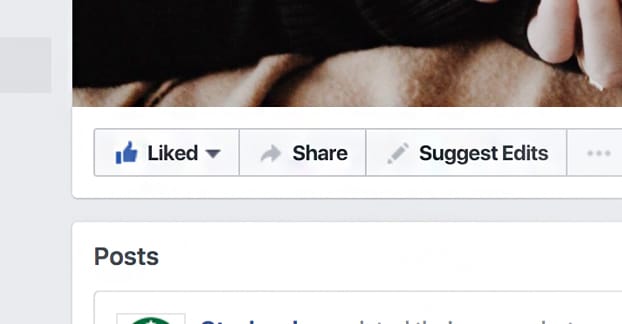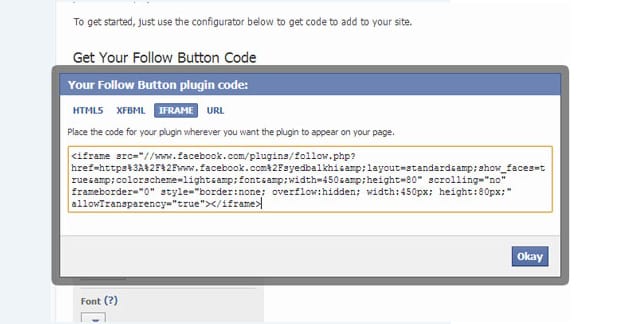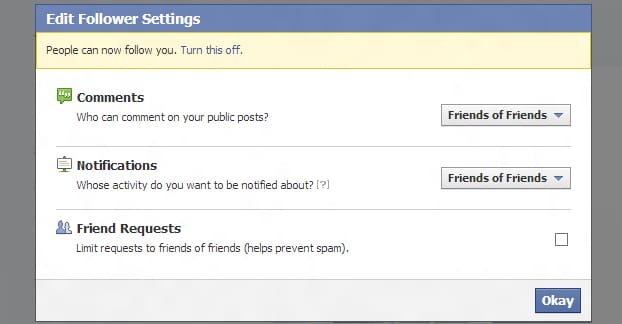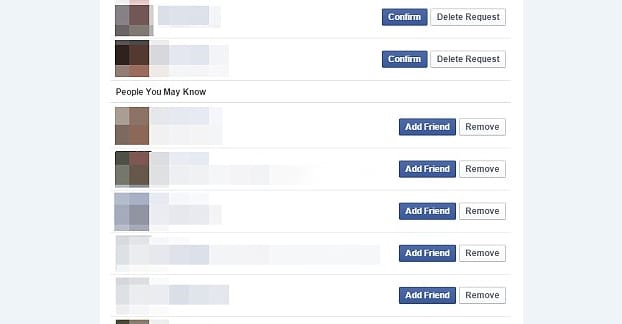There are three types of relationship between two people on Facebook. While the title of this post only mentions two of them, I’m going to cover all three, simply for the sake of completion.
Three Types of Relationship
For a quick summary, the three types of relationship between two entities on Facebook are the friendship, the follow, and the fan. Friendships take place between two personal profiles. Follows also take place between two personal profiles. Fans are personal profiles engaging with business pages.
There are other ways you can interact with people on Facebook beyond these relationships. For example, you can join a group with other people in it, and you don’t have to be in any of the above relationships with anyone in the group to do so. You can also join messenger chats. You can search for people and view their profiles without having to engage with them, though you do suffer from privacy setting restrictions if they have them.
Facebook Fans
Fans are the relationship between a personal user and a business. When a personal user likes a business page – or any other sort of page – they are essentially subscribing to a content feed. The brand page doesn’t see the personal user’s posts, though they do get a lot of information about the user added to their aggregated analytics. It’s a one-sided relationship in terms of content; all content flows from the page to the profile. This includes both organic posts and paid posts.
I’m not going to go into great detail about these here, because the post is going to be focused on the interpersonal relationships instead. Since the fan relationship is the core of business interactions on Facebook, there are a ton of posts written about it around the web, so feel free to check out those instead.
Facebook Follows
A follow on Facebook is an interesting relationship, because it’s probably one of the least well-known relationships out there. In many was it’s similar to a Fan relationship or to a Twitter follow. It’s the Facebook one-sided relationship for personal users, and fills a role as a sort of less intense relationship. It’s also possibly the least valuable kind of relationship, though for certain types of user, it’s beneficial.
One reason the follow is the least visible type of relationship is because it’s not enabled by default. For users with strict privacy settings, they will have to implement follows on their profile to enable it. In order to do this, you need to click the drop-down arrow in the top right of Facebook and click settings. In the settings menu, click the Public Posts section in the left column. From there, you can choose one of the two settings.
- Friends means only people who are friends with you can follow you.
- Public means anyone can follow you, regardless of whether or not they’re friends with you as well.
You can also change other settings about your public posts. You can change who can comment on your posts, to limit it to just friends, friends of friends, or the general public. You can change who can get notifications and whose notifications you receive. You can change who is allowed to like or comment on your profile. You can set comment ranking, to put a “top comments” section on your post rather than the normal chronological sort.
So what does a follow do? It allows people who follow you to see your posts without you having to approve a two-sided relationship. If person A wants to see person B’s posts, they can follow person B. A will see B’s posts, but B won’t see a thing from A outside of any comments and likes they leave, assuming those are allowed. If B wants to see what A posts, they can follow A as well, or they can initiate a friend relationship. There’s not much of a difference between these two, other than what is allowed via privacy settings.
Follows are also instant. When A follows B, B doesn’t need to approve it. This is in contrast to a friend request, which must be submitted by one party and approved by the other before it takes place.
Follows are subject to EdgeRank the same as any Facebook relationship. The person doing the following will see the followee’s posts in their feed depending on their engagement level, preferentially above brands but below friends, in general. The specifics will vary up and down depending on how much the follower comments, likes, and otherwise engages with the followee.
When you take everything into consideration, a follow is a pretty standard relationship for many online forums. The automatic reciprocal nature of a friendship on Facebook is the oddball, when most other social networks and virtually every non-social site works on a one-sided basis.
So who would want to use follows? They’re generally most used by personal users of note who don’t want to make pages for themselves. Someone like George Takei, of Facebook viral fame, has long had an established page. However, many other people choose to use profiles instead of pages for many reasons. For example:
- A journalist may not think highly enough of themselves to make a brand page for their own name; their own personal profile is enough. People can still follow it, and they don’t need the advanced features of a page.
- A CEO might own four different businesses, each with a page of their own. Rather than manage a page and a profile for their own name as well, they just handle things through their personal profile, which has admin rights for the pages representing their businesses.
- A novice writer looking for popularity and fame might not be eligible for a Facebook page, as they are not a person of note, particularly if they haven’t published much other than a few magazine contributions. They can build fame through a profile and potentially transition to a page later.
Occasionally, Facebook will determine that you’re using a Facebook profile in a way that they consider exclusive to pages, i.e. as a business. Facebook doesn’t like people running businesses out of their profiles, so they will step in and temporarily lock the profile and force them to make a page. This doesn’t get rid of the profile, but it does copy followers over to the page, to make sure the transition is smooth.
There are a few good reasons to keep the ability to follow your profile disabled, and to use a page if you need to build a brand presence.
- Privacy concerns might make you want to lock down your personal profile to the extreme, only allowing a few select people in. It’s hard to build fame this way, so sequestering your brand persona and your personal profile apart can be valuable.
- You do a lot of your work under a pen name and want to keep your personal name separate from your pen name, so you create a page for the pen name and keep your personal profile separate.
- You don’t want to deal with the friend request spam that comes with being a high profile personal user, so you direct people to follow your page, where you don’t need to confirm anything.
- You want to build a social media team to do some management of your presence for you. Pages have team functionality and page roles; personal profiles do not, and would require you to give out your password.
- Something about your business would be objectionable to your personal friends, or is something you want to hide. For example, authors who write adult fiction or erotica might not want to share that with their friends and family, and thus create a page for their professional life distinct from their personal life.
One thing you might notice is that follows are essentially the Facebook Fan relationship for personal profiles. There’s a reason for this, and it’s because Facebook wants to encourage people to grow audiences and become people of note, even if they aren’t eligible for verification or for a page quite yet. It keeps them around on the site so they can adopt a page later when it becomes available, and start spending money on ads, among other things.
Facebook Friends
The third and final type of relationship on Facebook is the traditional reciprocal friendship that the site is based upon. When you are friends with someone, you see their posts in your feed, and they see your posts in theirs. How frequently is, as always, subject to EdgeRank. Friends have more weight than follows or brands, and thus will appear for the bulk of a user’s feed. However, you only see a fraction of the posts of your friends, so you aren’t necessarily going to see everything from all of your friends.
Friendship is, as mentioned above, a gated relationship. In order to be friends with someone, one of you needs to submit a friend request, and the other needs to accept it.
Friendship does not automatically allow you full access to everything on a user’s profile. Facebook allows users to segment their friends into discrete lists, and set different privacy settings for each list. This is often used by savvy folks to set up a list for authority figures, teachers, bosses and the like, and sequester what they can see. Meanwhile, they set their public settings to strict and the settings for their close friends to open.
Now, one interesting aspect of this relationship is that the “see each others’ feeds” is actually still a follow. It’s simply a follow that piggybacks on the friend request. You can tell this is the case because you can go to the profile of one of your friends and you can unfollow them. This makes it so that you don’t see their posts in your feed, but you still remain friends and can still interact with them within the privacy settings they have set for their friends.
This happens quite frequently, in fact. Often, people will add their extended relatives, old high school friends, or people they need to associate with but not necessarily like to their friends list. By subsequently unfollowing them, they don’t snub their ‘friend’, but neither do they have to suffer through seeing posts that aggravate them.
One of the largest mistakes I see people make, when they’re in the “personal user trying to grow their fame” stage of Facebook usage, is to accept any friend request that comes along. There are a lot of problems with this approach. For one thing, it clutters up your feed to an extreme. Facebook’s filtering means that you’re unlikely to see anything from your actual close friends and family when there are hundreds or thousands of random people on your friends list as well. For another, it’s opening you up to a lot of potential privacy leaks. If you have your public profile partially locked down but open up to friends, but you accept any friend request that comes along, you might let in someone with malicious intent.
I always recommend being picky with the people whose friend requests you accept. The trick is, when a user submits a friend request to you, they also follow you at the same time. It’s up to you whether or not to accept the friend request, but the follow will linger even if you reject the request.
You can block someone from following you if you want, which is the same action as blocking them from seeing your profile at all. It’s good practice to do this if someone is harassing you or you simply don’t want them around.
Will Facebook introduce another kind of relationship in the future? It’s always possible they will continue to blur the lines between profiles and pages, but I wouldn’t count on it.









I have a question. In my followers list there are only people who send me friend request and I dont accept, or there are that people and my friends who also follows me.
only the ones who are not your friend, including the ones you’ve rejected.